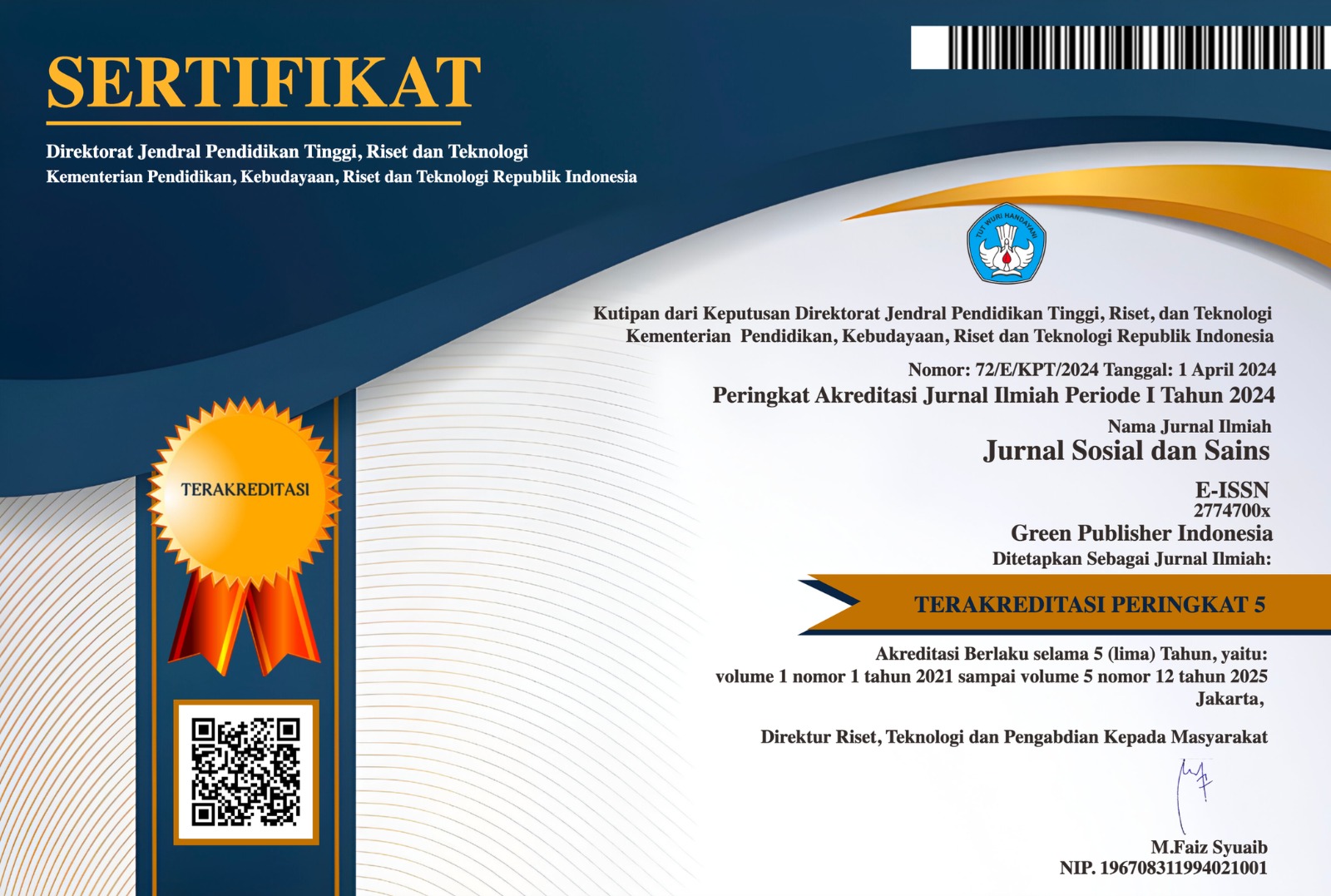Analisis Kemampuan Pemodelan Matematika Siswa SMA Melalui Konteks Soal Pemilihan Universitas
DOI:
https://doi.org/10.59188/jurnalsosains.v5i6.32256Keywords:
mathematical modeling, real-world contexts, matricesAbstract
Mathematical modeling is a bridge between mathematics and real problems that occur in students' lives. The introduction of mathematical modeling is an important agenda that must be given to high school students to optimize mathematical literacy and get used to solving problems with contextual problems. The selection of material contexts and relevant real-world problems is the initial key in teaching modeling. The selection of matrix material in the application of determining university criteria is an important consideration in introducing mathematical modeling in this study. This study used a qualitative approach involving a sample of 31 students of grade 11, MAN 1 Kota Bandung, West Java. Based on Galbraith & Holton's framework, this study evaluated the seven stages of modeling and found that students were able to understand and formulate the problem well, reaching an average score of 77.8%, but had difficulty in the interpretation and evaluation stages of the model with scores decreasing to around 60%. The use of decision-making matrices shows students' good ability to apply mathematical concepts to real-world contexts, although assistance is still needed to improve modeling skills.
Downloads
Published
How to Cite
Issue
Section
License
Copyright (c) 2025 Arief Ardyansyah, Janson Naiborhu

This work is licensed under a Creative Commons Attribution-ShareAlike 4.0 International License.
Authors who publish with this journal agree to the following terms:
- Authors retain copyright and grant the journal right of first publication with the work simultaneously licensed under a Creative Commons Attribution-ShareAlike 4.0 International (CC-BY-SA). that allows others to share the work with an acknowledgement of the work's authorship and initial publication in this journal.
- Authors are able to enter into separate, additional contractual arrangements for the non-exclusive distribution of the journal's published version of the work (e.g., post it to an institutional repository or publish it in a book), with an acknowledgement of its initial publication in this journal.
- Authors are permitted and encouraged to post their work online (e.g., in institutional repositories or on their website) prior to and during the submission process, as it can lead to productive exchanges, as well as earlier and greater citation of published work.








